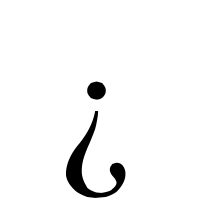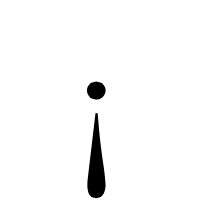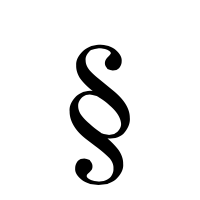Punctuation
Asterisk
The asterisk is used to call out a footnote, especially when there is only one on the page. Less commonly, multiple asterisks are used to denote different footnotes on a page (i.e., *, **, ***). Typically, an asterisk is positioned after a word or phrase and preceding its accompanying footnote.
Three spaced asterisks centered on a page may represent a jump to a different scene, thought, or section.
A group of three asterisks arranged in a triangular formation ⁂ is called an asterism.
Caret
The caret was originally used, and continues to be, in handwritten form as a proofreading mark to indicate where a punctuation mark, word, or phrase should be inserted in a document. The caret symbol is written below the line of text for a line-level punctuation mark such as a comma, or above the line as an inverted caret (cf. U+02C7 ˇ) for a higher character such as an apostrophe. The material to be inserted may be placed inside the caret, in the margin, or above the line.
Dagger / Double Dagger
The dagger is usually used to indicate a footnote, in the same way an asterisk is. The dagger is only used for a second footnote when an asterisk is already used. A third footnote employs the double dagger.
The inverted question mark (¿) is a punctuation mark written before the first letter of an interrogative sentence or clause to indicate that a question follows. The same is said for an exclamation mark. This is most commonly used in Spanish.
Pilcrow / Paragraph Mark

The pilcrow (¶), also called the paragraph mark, paragraph sign, paraph, alinea is a typographical character for individual paragraphs. It is present in Unicode as U+00B6 ¶.
The pilcrow can be used as an indent for separate paragraphs or to designate a new paragraph in one long piece of copy, as Eric Gill did in his 1930s book, An Essay on Typography. The pilcrow was a type of rubrication used in the Middle Ages to mark a new train of thought, before the convention of visually discrete paragraphs was commonplace.
The pilcrow is usually drawn similar to a lowercase q reaching from descender to ascender height; the loop can be filled or unfilled. It may also be drawn with the bowl stretching further downwards, resembling a backwards D; this is more often seen in older printing.
Section Sign
When duplicated, as §§, it is read as the plural "sections" (e.g. "§§ 13–21"), much as "pp." (pages) is the plural of "p.".
It is frequently used along with the pilcrow (¶), or paragraph sign. Like the dagger (†) and double dagger (‡), it is also sometimes used to link to a footnotewhere the asterisk (*) is already in use on a given page.
Tilde
Uncommon Typography
I thought it would be interesting to look at some more unusual marks, and see if I could include them.
Asterism
Fleurons
These are interesting, but something I do not thing is appropriate for my typeface.
The interrobang, also known as the interabang (often represented by ?! or !?), is a nonstandard punctuation mark used in various written languages and intended to combine the functions of the question mark (also called the "interrogative point") and the exclamation mark (known in printers' and programmers' jargon as the "bang"). The glyph is a superimposition of these two marks.
Irony Punctuation
Interrobang
Irony Punctuation

Irony punctuation is any proposed form of notation used to denote irony or sarcasm in text. Written English lacks a standard way to mark irony, and several forms of punctuation have been proposed. Among the oldest and most frequently attested are the percontation point proposed by English printer Henry Denham in the 1580s, and the irony mark, used by Marcellin Jobard and French poet Alcanter de Brahm during the 19th century. Both marks take the form of a reversed question mark, "⸮".
Conclusion
All of these characters are appreciate for body copy usage, and I think it would be really fun to include the uncommon glyphs, to give my typeface unique features so separate it from others in the market.








